From Cittadellarte in Biella to the United Nations Headquarters in New York. From 9 to 28 September, a site-specific installation of the Third Paradise will be illuminating the metropolis with art. The work, measuring 25 by 10 metres, is set up in one of the lawns surrounding the United Nations Headquarters, near the Rose Garden. As reported in a previous article, it is a representation of the trinamic symbol inspired by the 17 SDGs of the 2030 Agenda and is composed of 36 porcelain tiles, each measuring 120 x 120 centimetres: each of the Sustainable Development Goals is repeated twice, with two added tiles with the SDGs symbol placed between the series. In addition to the context of absolute prestige and authority, it is worth mentioning the plurality of organisations that have contributed to the creation of this Third Paradise: under the patronage of the Permanent Representation of Italy to the UN, the temporary installation is curated by Studio Legale Alessia Panella and Cittadellarte, in collaboration with Magazzino Italian Art, Alex Fremura, Shipping Services Italia Srl SB, Riccardo Fuochi and Federico Fuochi; also of note is the work carried out for Fondazione Pistoletto by Francesco Saverio Teruzzi (Cittadellarte’s cultural project manager) and Alessandro Lacirasella (exhibition project manager). The work was symbolically inaugurated in the context of the Summit of Heads of State and Government on the 2030 Agenda for Sustainable Development, held on 18 and 19 September in the Big Apple, in the presence of Paolo Naldini. On the occasion, the director of Cittadellarte spoke with Antonio Tajani, Italian Minister of Foreign Affairs and International Cooperation, and illustrated to the politician the peculiarities and messages that Michelangelo Pistoletto‘s Third Paradise work conveys. We therefore propose an interview with Paolo Naldini in order to offer a deeper insight into his participation.

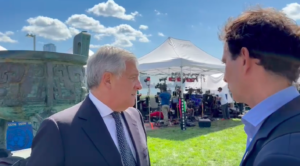
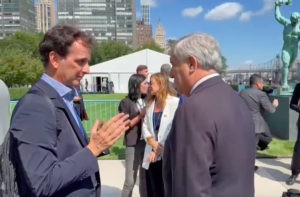
Paolo, what is the most powerful message you think the Third Paradise in the Big Apple can convey?
Paradise exists and it is right here, between the first and the second, it is a garden called Gaia, it is up to us to make room for its farmers, i.e. all those who work in the direction of the 2030 Agenda. The symbol is the key to addressing all the issues that the government delegates at the Summit have to resolve.
I am convinced that for them and for the communities they represent, meeting the symbol of the Third Paradise is a historic opportunity.
I would like each and every one of them to seize it.
The contribution of the Italian Mission to the United Nations was perhaps the most profound and ambitious that any country could bring. And it shouldn’t surprise that it came from Italy, since everyone knows Rome, Florence and the Renaissance. Today, the Third Paradise, the Art of Demopraxia and Cittadellarte in Biella, in my opinion, represent exactly that.
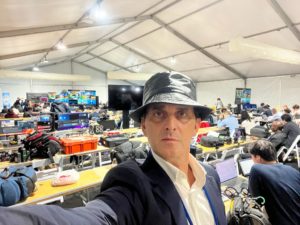
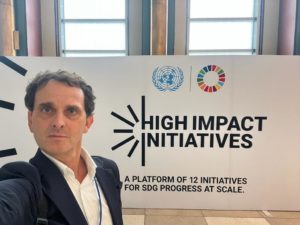
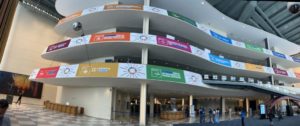
The last time you were in New York as director of Cittadellarte was in 2018, when you spoke at the High Level Political Forum on Sustainability. On that occasion, in an unusual declaration of peace, you had stated that “World War III is here. Either we will all win it by practising sustainability to the full and everywhere or we will all lose it”. Five years later, is this reflection of yours still relevant?
Today this situation is even more evident than it was then, with the climate crisis claiming victims in Libya as in the USA and forcing masses of desperate people to migrate.
Today, however, we have seen what governments can do when they are convinced of the urgency of action: billions of euros were allocated without delay to tackle the pandemic. And it was also thanks to those funds that we got out of it. Not only with vaccines and resuscitation beds, but with health personnel, with information and education.
Could those funds be committed to fight World War III? Without delay, if only we realised that, as some activists say, we really are in danger of being the last generation if we do not have the courage to rebel against extinction.
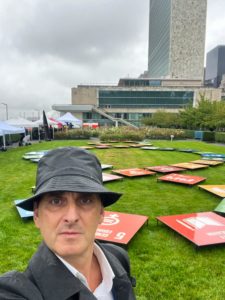
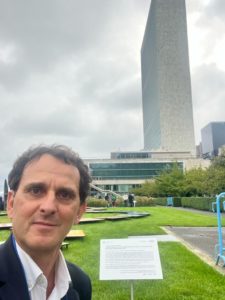
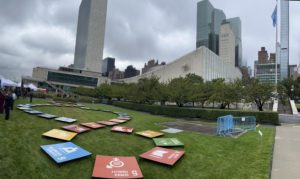
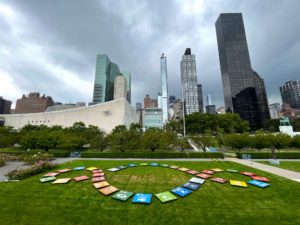
From the Third Paradise in Geneva, with the installation Rebirth, to the site-specific Third Paradise in New York. The relationship and work between Cittadellarte and the United Nations is becoming increasingly profound, also evident in this new work inspired by the 17 SDGs of the 2030 Agenda. On a practical and inspirational level, what has Fondazione Pistoletto given to the UN in recent years and what has the UN given to Fondazione Pistoletto?
The UN is aware that to unite nations as well as to achieve the goals of the 2030 Agenda, written instructions are not enough, it is necessary that people and communities become intimately and fully convinced of what we have to do; and they know that art can make a difference in generating this deep conviction.
For me and for Cittadellarte, seeing that the UN believes that the function of art is essential to face the great challenges of humanity is an encouragement that has reached our emotions as well as our brains, and helps us not to give up in the face of the difficulties and short-sightedness of those who still think that art is only a superfluous entertainment that is at best pleasant or economically profitable.
11 September 2023 marked 22 years since the attack on the Twin Towers, while last March saw the opening of Michelangelo Pistoletto’s exhibition The Preventive Peace at Palazzo Reale in Milan. How is peace linked to art and how does Cittadellarte engage on this front?
If art means creating something that was not there before by combining configuring opposites, then art is the very essence of peace. Because peace does not consist in the victory of the strongest, in the elimination of the enemy, but in the co-creation of a work that is born of our being together here and now.

